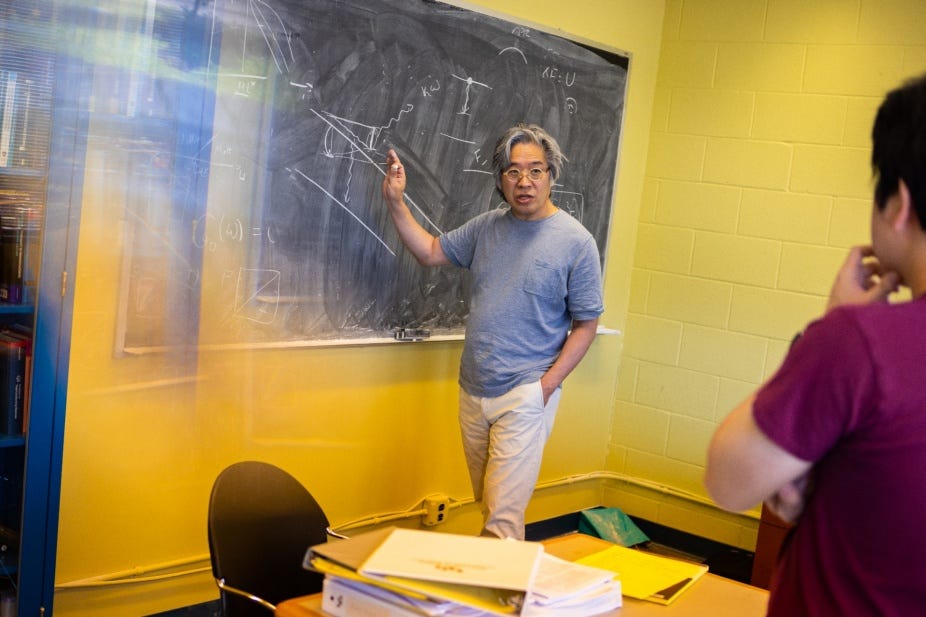Researchers Prove Electrons Move Along “Quantum Paths” in New Study

Looking solely at their subatomic particles, most substances can be categorized into two groups. Metals, such as copper and iron, exhibit free-flowing electrons enabling electrical conductivity, whereas insulators, like glass and rubber, retain tightly bound electrons and, therefore, do not conduct electricity.
The transformation of insulators into metals when subjected to a strong electric field presents intriguing possibilities for microelectronics and supercomputing. However, the scientific community lacks a comprehensive understanding of the underlying physics, commonly referred to as resistive switching. Experts, including Jong Han, a condensed matter theorist from UB, are actively debating essential questions, such as the required electric field strength.
The lead author of a study exploring the long-standing mystery behind insulator-to-metal transitions, Professor Jong Han, has taken a fresh approach to address this enigma. The study titled “Correlated insulator collapse due to quantum avalanche via in-gap ladder states” was published in Nature Communications in May.
According to Han, the disparity between metals and insulators can be explained through quantum mechanical principles, which dictate that electrons are quantum particles, and their energy levels are organized in bands with forbidden gaps.
Traditionally, the Landau-Zener formula from the 1930s has been used as a blueprint to calculate the electric field required to propel an insulator’s electrons from its lower bands to the upper bands. However, experimental evidence over the decades has revealed that materials necessitate a much smaller electric field — approximately 1,000 times smaller — than initially estimated by the Landau-Zener formula.

To tackle this discrepancy, Han pursued a different question: the behaviour of already present electrons in the upper band when subjected to an electric field. Through computer simulations of resistive switching, accounting for the upper-band electrons, Han discovered that a relatively small electric field could collapse the gap between the lower and upper bands. This created a quantum pathway for electrons to transition between the bands freely.
To illustrate this idea, Han uses an analogy of electrons moving on a tilted second floor. When an electric field tilts the floor, not only do electrons move, but previously forbidden quantum transitions also open up, causing the floor’s stability to abruptly disintegrate, enabling electrons on different floors to flow up and down.
By considering this concept, Han believes some of the disparities in the Landau-Zener formula can be resolved. Moreover, his simulations suggest that the quantum avalanche is not triggered by heat. However, the full insulator-to-metal transition does not occur until the temperatures of the electrons and phonons (quantum vibrations of the crystal’s atoms) reach equilibrium. This indicates that electronic and thermal switching mechanisms are not mutually exclusive and can occur simultaneously.
The research, co-authored by Jonathan Bird, a professor and chair of electrical engineering at the School of Engineering and Applied Sciences, provides valuable insights into the electrical behaviour of novel nanomaterials at low temperatures. These insights may serve as a basis for future microelectronic technologies, potentially applicable in data-intensive fields like artificial intelligence and neuromorphic computing, which seek to emulate the human nervous system’s electrical stimulation.
The study includes contributions from various authors, including UB physics Ph.D. student Xi Chen, Ishiaka Mansaray (a postdoc at the National Institute of Standards and Technology), and Michael Randle (a postdoc at the Riken research institute in Japan), among others from international research institutions.
“While our studies are focused on resolving fundamental questions about the physics of new materials, the electrical phenomena that we reveal in these materials could ultimately provide the basis of new microelectronic technologies, such as compact memories for use in data-intensive applications like artificial intelligence.”
— Jonathan Bird
Since publishing the paper, Han has developed an analytic theory that aligns well with the computer simulations. Nevertheless, there is still more work to be done, particularly in investigating the precise conditions required for a quantum avalanche to occur. Han anticipates that experimentalists may raise questions about why this phenomenon was not observed earlier, underscoring the need for further exploration and investigation.
Featured image: Photo of Professor Jong Han by Douglas Levere
If you found this article to be informative, you can explore more current quantum news here, exclusives, interviews, and podcasts.
